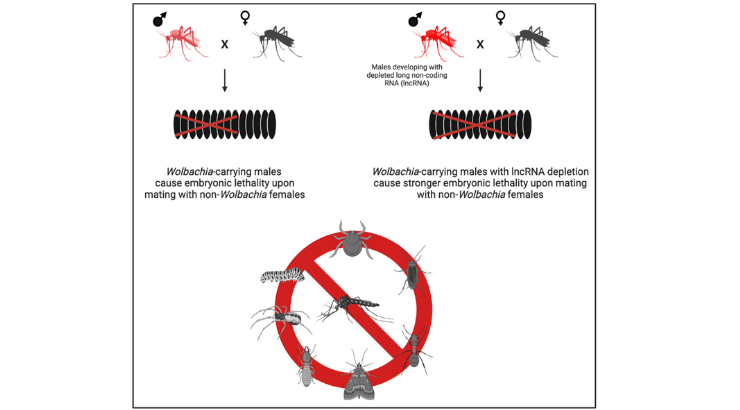Compositions and Methods for Cytoplasmic Incompatibility Control of Arthropods
ID# 2024-5740
Technology Summary
Wolbachia bacteria is known to effectively block virus replication in transmitting mosquitoes and rapidly spread itself in mosquito populations via a drive called cytoplasmic incompatibility (CI). Wolbachia-induced CI strength, however, can wane in nature. The technology uses the power of endosymbionts like Wolbachia and links it with long non-coding RNA (lncRNA) expressed in male arthropods. The inventors used genetically modified arthropods, specifically Drosophila (fruit flies) to do their research. The researchers built a model off the abilities of Wolbachia to target arthropod host molecules to expand the scope of CI in vector control.
Application & Market Utility
Using this integrated approach, they show that Wolbachia deplete lncRNA to manipulate the sperm cells in the target population. By interfering with this lncRNA production and sperm development, the researchers successfully caused stronger CI than normal levels. Their proprietary method of modifying sperm through long non-coding RNA inhibition and causing stronger cytoplasmic compatibility, along with the use of Wolbachia has improved scientific understanding of male sterility and lays groundwork for future steps in commercializing its applications. The inventors have found that their methods involving depleted lncRNA and defective sperm development led to augmented CI.
Next Steps
Using the technology towards sustainable population suppression and population replacement. Emphasizing the elimination of traits such as the transmission of pathogenic RNA viruses.

